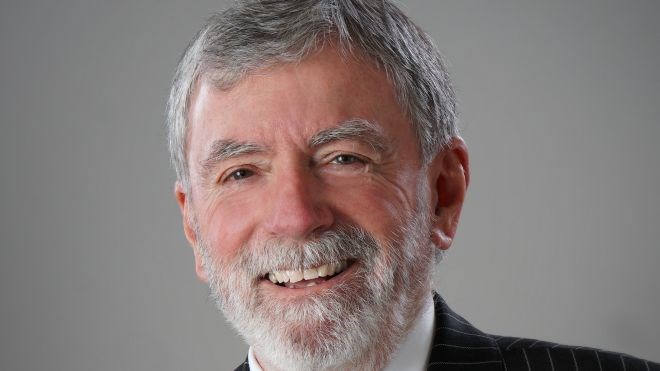As we open the new year, my 44th as your faithful ink-stained servant, you'll notice I am 20 years older than I was last month. The clue is my new picture. I include my old picture as a public service so you can see the aging process more clearly, or as Justin would say at a fundraising event “full transparency.”
I didn't mean to deceive you about my advancing age. It's just that there is a certain amount of apathy associated with making sure your picture is current for public consumption. I've only changed it four or five times in all these years.
I bring the same plodding lack of creativity to barbers. I've only had four regulars and two of them died in their boots.
What sponsored my last picture was the obligation to provide a photo to an organization I was joining as a volunteer. They had a newsletter that required identification. I liked the photo they took and so appropriated it for the newspaper.
Last month, the same kind of request came forward from a different organization I have joined and, fortunately, Laurentian University, where I am in my last days as a board member, says goodbye by taking your photo and putting it on the wall.
That’s 20 years without having to pay for an official photo in the newspaper. Terrific.
The problem with the new photo is that I look too cheerful. How are you supposed to write a serious column in these times of extraordinary anxiety with a smile on your face? An honest mistake. I don’t smile that often. That said, my inner cabinet (my wife, my daughter and long-suffering executive assistant) say it’s the best picture. They are just tired of me not smiling.
It gets worse. When the picture came back from the studio, my assistant said, “You've been Photoshopped.” I said you're kidding. I hadn’t noticed. She said look at your teeth. They're all white. Look at your ears; there is no hair in them. Look at your wrinkles; they’ve been smoothed out.
It was depressing. Being Photoshopped without even asking for the favour is not a vote of confidence.
All of which leads me to the obvious. What is real in the digital age?
A month ago, a man with a gun walked into a Washington, D.C., pizzeria with a shotgun believing it was a front for a child sex ring led by Hilary Clinton. The story had over a million shares. It was retweeted as true by President-elect Donald Trump’s new nominee for National Security Advisor, Lt. General Michael Flynn. Fortunately, there was one shot and the man was arrested. There was, of course, no truth to it. It was more bizarre than a Saturday Night Live comedy sketch.
All of this is insane. Insane is now normal. “Fake news” is to be expected in a world of Facebook, Google and Twitter. The president-elect has nearly 20 million Twitter followers. He has to keep them entertained. He is media. He can say whatever comes into his mind and many believe him. Media are obliged to report these stupidities as news. It is. It is also good business. Builds audience.
It is a horrific circle of madness, self-interest and money-making.
It is difficult to see the remedy.
The only defence to fake news is real news, backed up by trusted news reporting, promulgated by institutions that take pride in their integrity. The president-elect says all reporters are liars. Many people no longer care about the truth or the fourth estate that was tasked with the responsibility of holding government accountable. They prefer entertainment and revenge for what ails them. The fourth estate is on the ropes.
I’m not sure which picture to use. The old one, which is no longer true, or the new one, which is only partially true.



